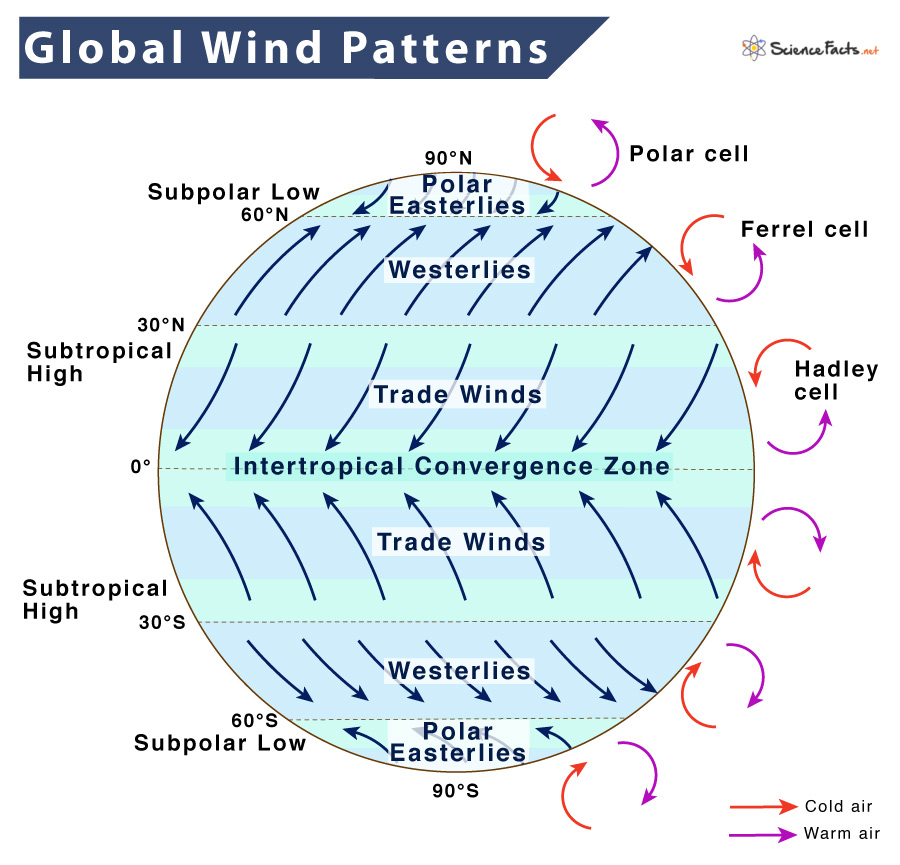Nature Of Winds Presentation
| Introduction to Winds | ||
|---|---|---|
| Winds are the natural movement of air in the Earth's atmosphere. They are caused by the uneven heating of the Earth's surface by the sun. Winds play a crucial role in shaping weather patterns and distributing heat and moisture around the globe. | ||
| 1 | ||
| Global Wind Patterns | ||
|---|---|---|
| The Earth's rotation and the unequal heating of its surface create three main global wind belts: the trade winds, the prevailing westerlies, and the polar easterlies. The trade winds blow from the east towards the equator, while the prevailing westerlies blow from the west in the mid-latitudes. The polar easterlies blow from the polar regions towards the mid-latitudes. | ||
| 2 | ||
| Local Wind Systems | ||
|---|---|---|
| Local wind systems are influenced by topography, land, and sea breezes, and temperature variations. Land and sea breezes occur due to the different heating rates of land and water. Mountain and valley breezes are caused by the temperature difference between the slopes and the valley floor. | ||
| 3 | ||
| Monsoons | ||
|---|---|---|
| Monsoons are large-scale wind systems that result from seasonal changes in temperature and pressure. They are characterized by a reversal in wind direction, which brings heavy rains to areas that experience a monsoon climate. Monsoons are vital for agriculture and have a significant impact on the economies of affected regions. | ||
| 4 | ||
| Wind Speed and Direction | ||
|---|---|---|
| Wind speed is measured using anemometers and is often reported in kilometers or miles per hour. Wind direction is indicated by the direction from which the wind is blowing, measured using a wind vane. Both wind speed and direction are important for understanding weather patterns and forecasting. | ||
| 5 | ||
| Jet Streams | ||
|---|---|---|
| Jet streams are narrow bands of high-speed winds in the upper atmosphere. They are caused by the temperature difference between tropical and polar regions. Jet streams have a significant influence on the movement of weather systems and are commonly used by airplanes to save fuel and reduce flight time. | ||
| 6 | ||
| Local Effects of Winds | ||
|---|---|---|
| Wind can cause erosion and transport soil particles, leading to the formation of sand dunes. Strong winds, such as hurricanes and tornadoes, can cause significant damage to structures and vegetation. Wind can also impact human health, carrying pollutants and allergens over long distances. | ||
| 7 | ||
| Wind Energy | ||
|---|---|---|
| Wind energy is a renewable energy source that harnesses the power of wind to generate electricity. Wind turbines convert the kinetic energy of the wind into mechanical energy, which is then used to generate electricity. Wind energy is environmentally friendly, reduces reliance on fossil fuels, and contributes to reducing greenhouse gas emissions. | ||
| 8 | ||
| Weather Vanes and Windsocks | ||
|---|---|---|
| Weather vanes and windsocks are devices used to determine wind direction. Weather vanes often have decorative shapes and are commonly found on top of buildings. Windsocks are typically used at airports and indicate both wind direction and speed. | ||
| 9 | ||
| Conclusion | ||
|---|---|---|
| Winds are a natural phenomenon that play a vital role in shaping our weather and climate. Understanding the nature of winds is essential for predicting weather patterns, harnessing wind energy, and managing their local effects. By studying winds, we can gain insights into the Earth's dynamic atmosphere and the interconnectedness of our planet's systems. | ||
| 10 | ||









